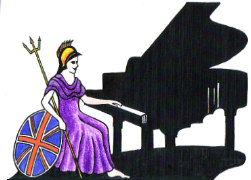Teachers, Accompanists and Piano Entertainers in the UK

UK Piano Page

251 Kings Road
Chelsea
Chelsea, London
England
Chelsea London was founded on the famous King's
152 - 160 Wardour Street
Soho, London W1F 8YA
England
For nearly two hundred years we have sold upright
184 St. Ann's Road
Haringey, London N15 5RP
England
J. Reids supply new and fully restored pianos from
1 Queen Street
Horsham, West Sussex RH13 5AA
England
The Horsham Piano Centre was established in 1980
Central Arcade
Newcastle upon Tyne, Tyne and Wear NE1 5BP
England
JG Windows Ltd is one the UK's longest established
Music Festival for performers and guests Our 10th
18-06-2022 12:30PM
The Morecambe Bay Piano Group was set up to extend
11-12-2021 01:00PM
The Morecambe Bay Piano Group was set up to extend
08-01-2022 01:00PM
The Morecambe Bay Piano Group was set up to extend
12-02-2022 01:00PM
Piano Veneers and Finishes
Some of the piano veneers and finishes you can have on upright and grand piano today
Cherry Gloss Polish
Mahogany Gloss Polish
Makassar Ebony
Cherry Satin
Bubinga Gloss Polish
Walnut Satin with Rosewood Inlay
Walnut Gloss Polish
Camphor
Walnut Satin
Alder Satin
Ebony Gloss Polish
White Gloss Polish
Pink Gloss Polish
Blue Gloss Polish
Red Gloss Polish